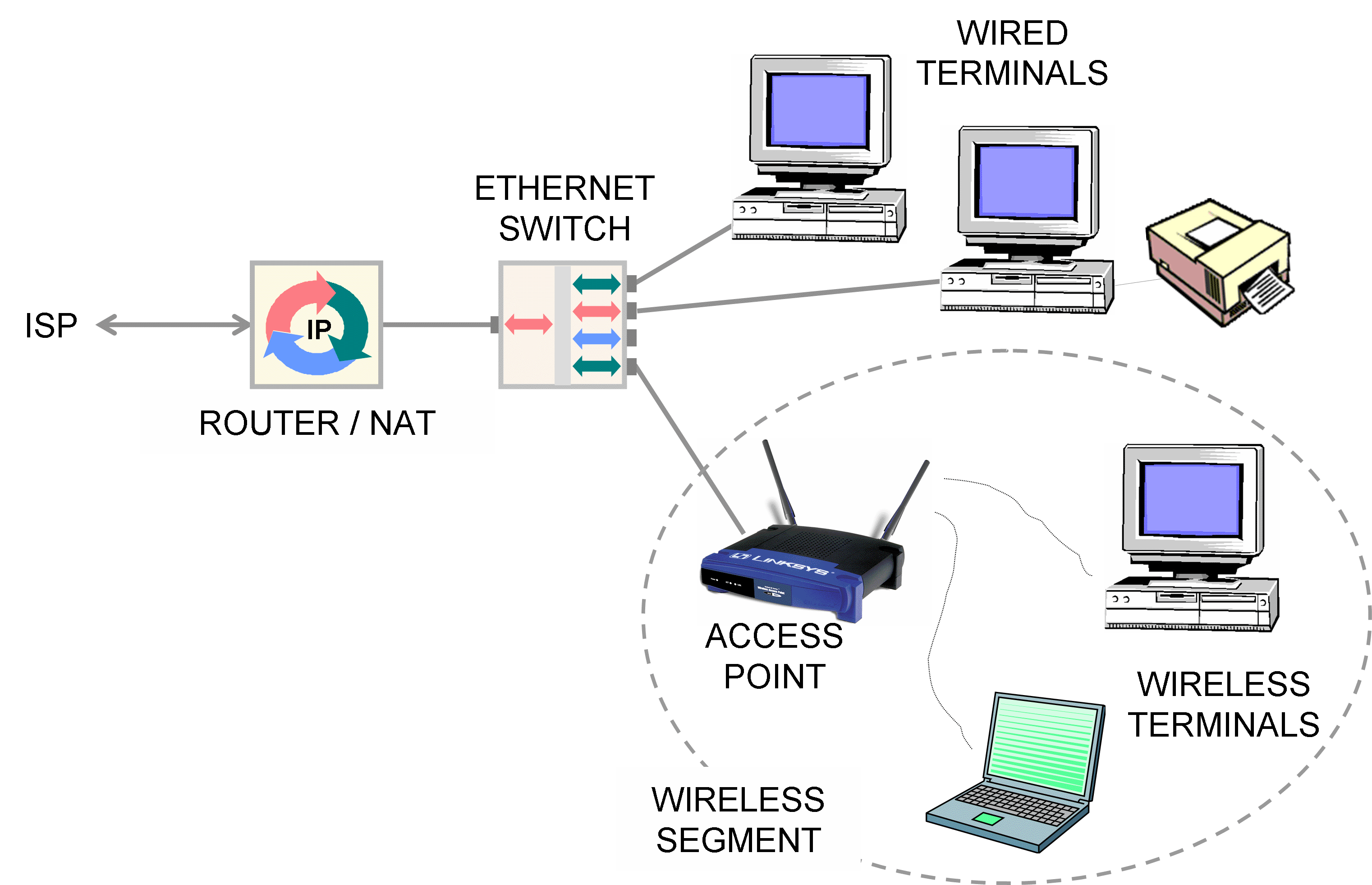Teracom Tutorial: Basic System Architecture


Devices, such as computers, servers, printers, etc., that connect to a local area network (LAN) are normally called stations or terminals . We use both in this course. A wireless access point (AP) is a device connected to a LAN to allow wireless stations to become part of the LAN. It is a transceiver. In a simple case, the AP may only serve one station. Normally, the AP will serve more than one station. In addition, there may be more than one AP connected to a LAN. This provides additional capacity and can serve to cover a large geographic area by placing.
APs covering the area. APs can stand alone and serve to connect only wireless devices to each other. Normally, however, they are used in conjunction with a wired LAN. A primary use is connection to the public Internet or to a large corporate enterprise network and somewhere these networks get back to wires.
The range of operations is measured from the AP. For example, the range of 802.11b for 11 Mb/s is about 100 feet. This distance is measured from the AP in all directions and is actually a sphere although most people only think of it as a horizontal circle around the AP. But the AP is a radio transmitter (and receiver) and the transmissions radiate in all directions from the antenna. If the AP is located on the fifth floor of a building, it will radiate around the fifth floor but also radiate up to the sixth and seventh floors as well as down to the fourth and third floors. The penetration of the radio waves through the floors may not be as great as through the walls and the sphere of radiation may be somewhat “squashed” but some radiation up and down will occur. Since most wireless applications connect to a wired LAN or to some other network like the Internet, APs also come integrated into other LAN devices such as bridges or routers.
Multiple access points covering a geographic area such as a campus or large office complex allow roaming across the area. User stations such as laptop computers with wireless network interface cards (NIC) will communicate with the “nearest” AP. Nearest really means the AP with the greatest signal strength at the point where the user is located, which might not physically be the nearest AP. APs form a LAN segment. Wireless stations vie for use of the wireless media in the same way wired stations vie for use of the wired media. The method specified in 802.11b is called carrier sense multiple access with collision avoidance or CSMA/CA. It is a method similar to CSMA/CD first specified in IEEE 802.3, the bus standard for wired LANs.